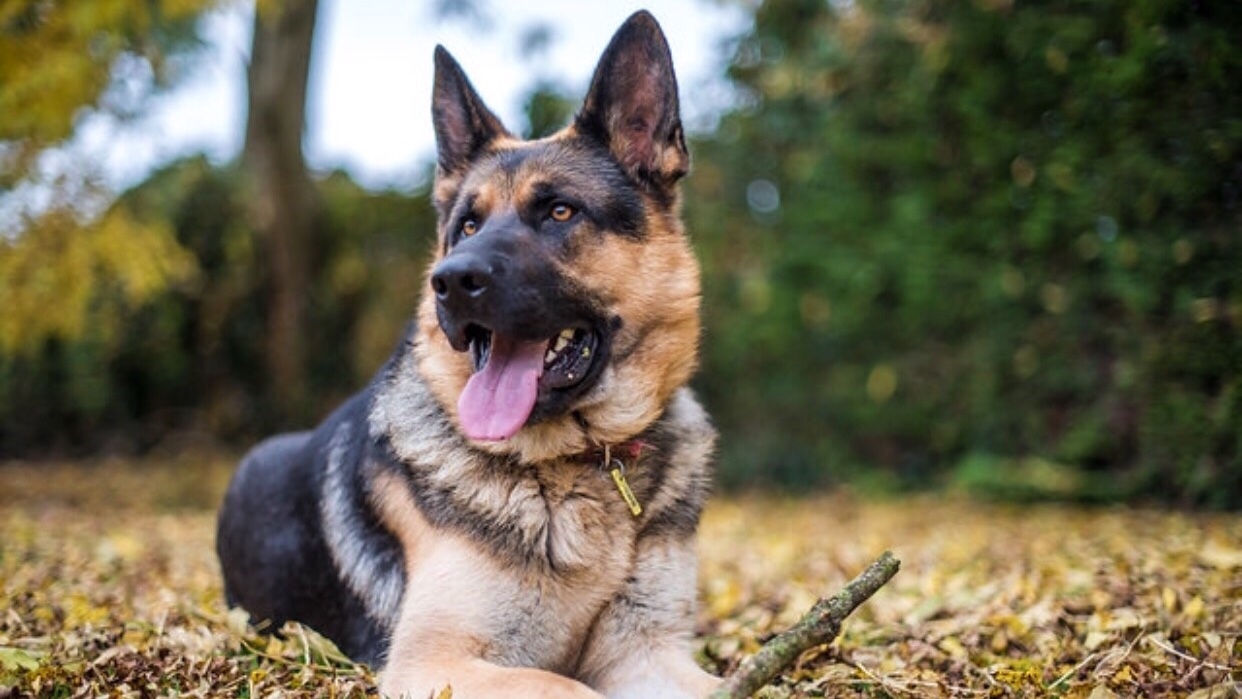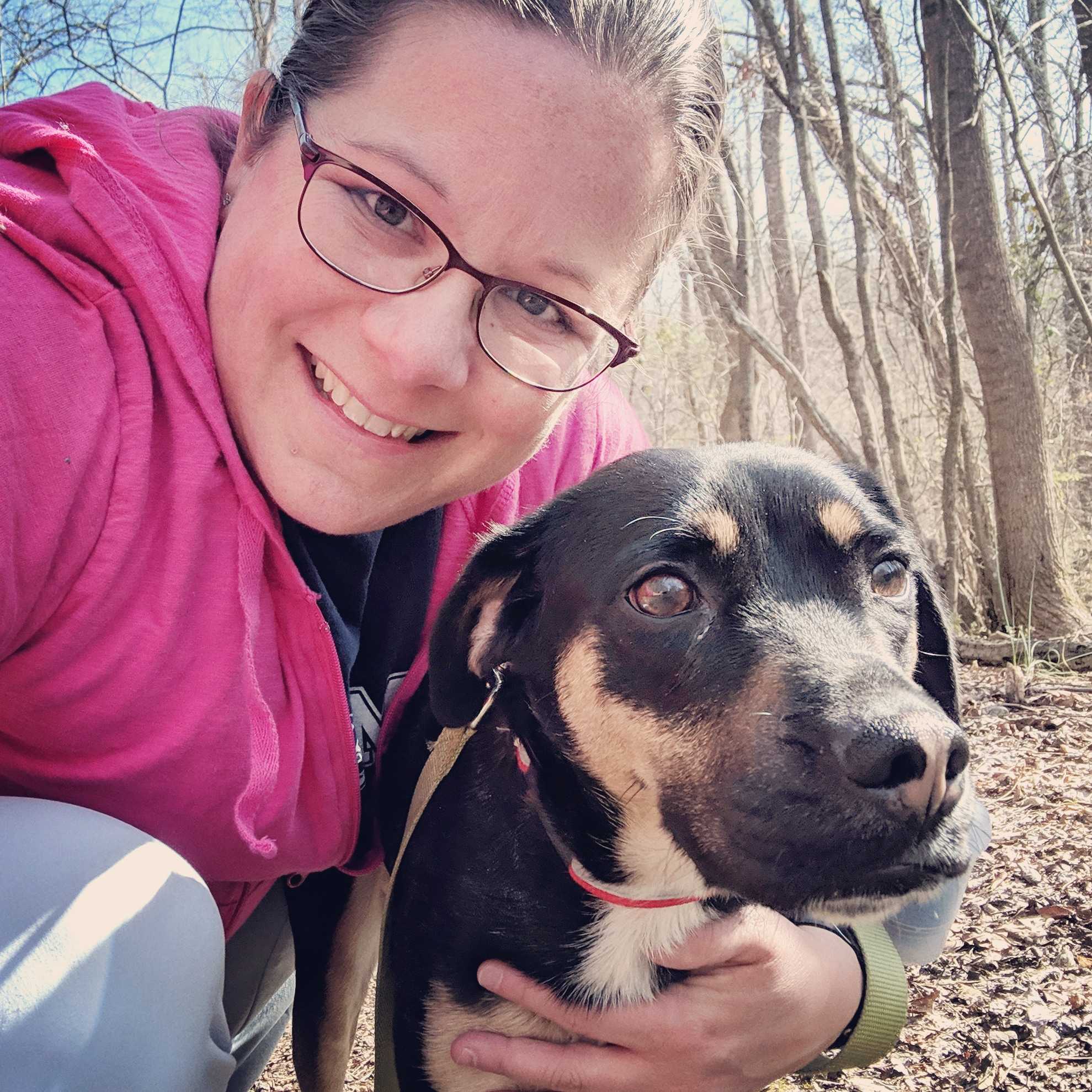What breed is my dog? How to identify any breed
Wondering, ‘What breed is my dog?’ Our expert vet is here to help you work it out.

If you’ve ever found yourself asking, ‘What breed is my dog?’ but are unsure of the answer, then you’ve come to the right place. Vet Dr. Catherine Barnette has rounded up some of the best ways to try and figure it out.
There are lots of reasons why might want to work out what your dog’s breed is. Whether it’s to understand their behavior better, identify common health problems, or just to satiate your own curiosity. You never know, they might be one of the smartest dog breeds.
Did you know that certain breeds are more likely to develop diseases in the future? If your dog is one of them, it’s important that you can spot the symptoms and give them the support they need.
According to the journal PLOS ONE, short-faced breeds, like pugs and bulldogs, are prone to brachycephalic obstructive airway syndrome (BOAS), a respiratory disorder that can cause snoring and exercise intolerance. The journal Acta Mylogica explains that boxers are prone to arrhythmogenic right ventricular cardiomyopathy, a heart disease that can be potentially life-threatening. These are just some of the common dog diseases to keep an eye out for.
There are lots of different ways to identify your dog’s breed, like trying an online quiz or using one of the best DNA dog tests. Here are some of the behavior characteristics and physical traits that Dr. Catherine Barnette says to look out for (plus five other ways to work it out):

Dr. Barnette graduated from the University of Florida in 2006 where she received both her B.S. in Zoology and her Doctor of Veterinary Medicine (DVM). She has 15 years of clinical experience as a small animal veterinarian, treating dogs, cats, and occasional exotic patients. When she’s not writing content as a freelance veterinary writer, Dr. Barnette lives in southwest Florida with her husband and daughter (plus two cats, a dog, and a rescued dove!) and enjoys kayaking, biking, and hiking.
Physical traits aid in identification
Purebred dogs can often be identified by their physical traits. Height, body conformation, coat length, color, markings, head shape, ears, and tail carriage can all be helpful in determining the breed of a purebred dog.
For example, a large breed dog with a sloped back, black and tan coat of medium length, erect ears, hanging tail, and a longer snout is likely to be a German Shepherd.

In contrast, a small, round dog with a short, tan coat, a corkscrew tail, and a smooshed face is likely to be a pug.

Unfortunately, physical traits are not always reliable when identifying mixed breed dogs. You might expect mixed breed dogs to have a combination of their parents’ traits. In reality, though, mixed breed dogs may look like both of their parents, one of their parents, or neither of their parents. In fact, all of these tendencies can sometimes be observed in the same litter!
In some mixed-breed litters, you will have puppies that look like mom, puppies that look like dad, puppies that look like a combination of mom and dad, and puppies with a completely unexpected appearance. This means that physical appearance is not always completely reliable in identifying the breeds that make up a mixed-breed dog.
Behavioral characteristics can be helpful
Like physical characteristics, behavioral characteristics can sometimes provide a clue about a dog’s breed. If you have ever heard a Beagle or Basset Hound “yodel,” you could probably recognize that sound anywhere!
A mixed-breed dog that makes similar sounds may also contain one of those breeds, because dogs that demonstrate breed-specific behaviors may be more likely to belong to that breed.

Dogs that have been bred for protection, such as Rottweilers and Doberman Pinschers, tend to be cautious around strangers and may be protective of their families.

Dogs that have been bred for herding, such as Border Collies and Australian Shepherds, may be seen “herding” small children and other pets in the home.
Retrievers love a good game of fetch, while other hunting breeds (such as German Shorthaired Pointers) tend to chase anything that moves.
Examining your dog’s behavior can provide additional clues about your dog’s breed. However, it’s important to keep in mind that behavior is not an accurate predictor of breed. Behavioral clues may give you hints, but should not be regarded as a source of definitive answers.

Other tools for dog breed identification
1. Online quizzes
Online quizzes, such as the one available at The Dog Key, also claim to help you identify your dog’s breed. These quizzes ask you questions about your dog’s physical characteristics, using your answers to narrow down your dog’s breed.
Like apps, these quizzes are most likely to be helpful for purebred dogs. They may also help you identify breeds that you hadn’t considered when questioning the genetics of your mixed-breed dog.
2. Genetic or DNA testing
The best way to determine the genetic makeup of your mixed-breed dog is with the use of genetic testing. These tests examine your dog's DNA, looking for the presence of specific DNA sequences that are associated with certain breeds.
All domesticated dogs have nearly the same genetic material. A Great Dane’s DNA is nearly identical to a Yorkshire Terrier’s DNA. However, there are small genetic differences that have been identified and associated with specific breeds. These differences form the basis for genetic testing.
Companies that perform canine DNA testing have tested thousands of samples, from dogs of known breeds. This testing has allowed them to accurately identify small genetic sequences that are associated with specific breeds. When your dog’s DNA is analyzed, similarities to these identified, breed-specific DNA sequences can be used to identify your dog’s breed.
While there are many different genetic testing providers, Wisdom Panel and Embark are two of the most popular options.
3. Wisdom Panel
Wisdom Panel is offered and recommended by many vets. This company has the largest pet DNA database, including over 21,000 samples. Wisdom Panel testing can be performed on a blood sample (collected by your vet) or on a cheek swab (collected by you, at home).
Your pet’s DNA is extracted from this sample and then compared known sequences that are associated with specific breeds, looking for evidence of these breeds in your dog’s genetic makeup.
4. Embark
Embark is another widely-used provider of canine genetic testing. This is an at-home test using a cheek swab; it is not typically offered at a vet’s office.
Embark has tested fewer samples than Wisdom Panel and does not look for any many different breeds as Wisdom Panel, but the company claims to examine a larger number of genetic markers. This means that Embark’s genetic testing may be more accurate for some breeds, but it may miss breeds that are not included in its database.
There are also other providers of canine genetic testing available, each with their own unique pros and cons. If you are interested in genetic testing, it’s important to research providers to make sure you are obtaining the best test for your dog.
How accurate are dog DNA tests?

No genetic test is perfect. In general, however, most providers of canine genetic testing claim to be over 95% accurate. This is great, but some false identifications can occur. Review your results critically, in order to make sure they make sense for your dog.
When canine genetic testing was first introduced in 2007, those of us working in practices that offered the service often saw results that made little to no sense: large-breed patients who were supposedly 50% Chihuahua, stray dogs that supposedly contained extremely rare breeds (leading us to wonder who was releasing these rare, expensive breeds onto the streets to breed with strays!), and other results that seemed nearly impossible.
Over time, however, these tests have become far more reliable. While we still encounter the rare surprising result (which we may regard with a bit of skepticism), most results nowadays “make sense,” given the dog’s appearance and the prevalence of breeds in our geographic area.
There is no single best way to answer the question, “what breed is my dog?” Ultimately, how you find the answer to this question will depend on how badly you want the answer and how accurately you want to understand your dog’s lineage.
Simple measures like physical characteristics and behavioral characteristics can often help you narrow down the list, along with apps and online tools. If you are looking for a more accurate answer, though, your best option is probably to pursue genetic testing.
Although these tests cost money and no genetic test is perfect, they can provide you with the most accurate information regarding your dog’s breed.
Is there an app to identify your dog's breed?
There’s an app for just about everything, and yes, that includes dog identification. Simply upload a photo or video of your dog, then let artificial intelligence do the hard work for you. The technology will match your dog up to other images in the database, giving you a rough idea of what breed your dog could be.
If you want to give it a go, you can try out some apps like Dog Scanner, Dog Breeds - Smart Identifier, and Dog Identifier: AI Dog Scanner. They also give you details on the breed, including characteristics, history, and temperament.
These apps are a lot of fun and can give you a good indication of your dog’s breed. However, the best way to know for sure is by taking a DNA test, as according to some user reviews, the apps aren’t always 100% accurate.
Want more dog content like this? Check out our features on the 10 oldest dog breeds in the world and dog breeds that hate the cold.
PetsRadar Newsletter
Get the best advice, tips and top tech for your beloved Pets
Dr. Barnette is a graduate of the University of Florida, where she received both her B.S. in Zoology and her Doctor of Veterinary Medicine (DVM). She has 15 years of clinical experience as a small animal veterinarian, treating dogs, cats, and occasional exotic patients. She now works as a freelance veterinary writer, creating educational content for veterinarians, veterinary team members, and dedicated pet owners. Dr. Barnette lives in southwest Florida with her husband and daughter (plus two cats, a dog, and a rescued dove!) and enjoys kayaking, biking, and hiking. Learn more about Dr. Barnette at www.linkedin.com/in/catherinebarnette.

